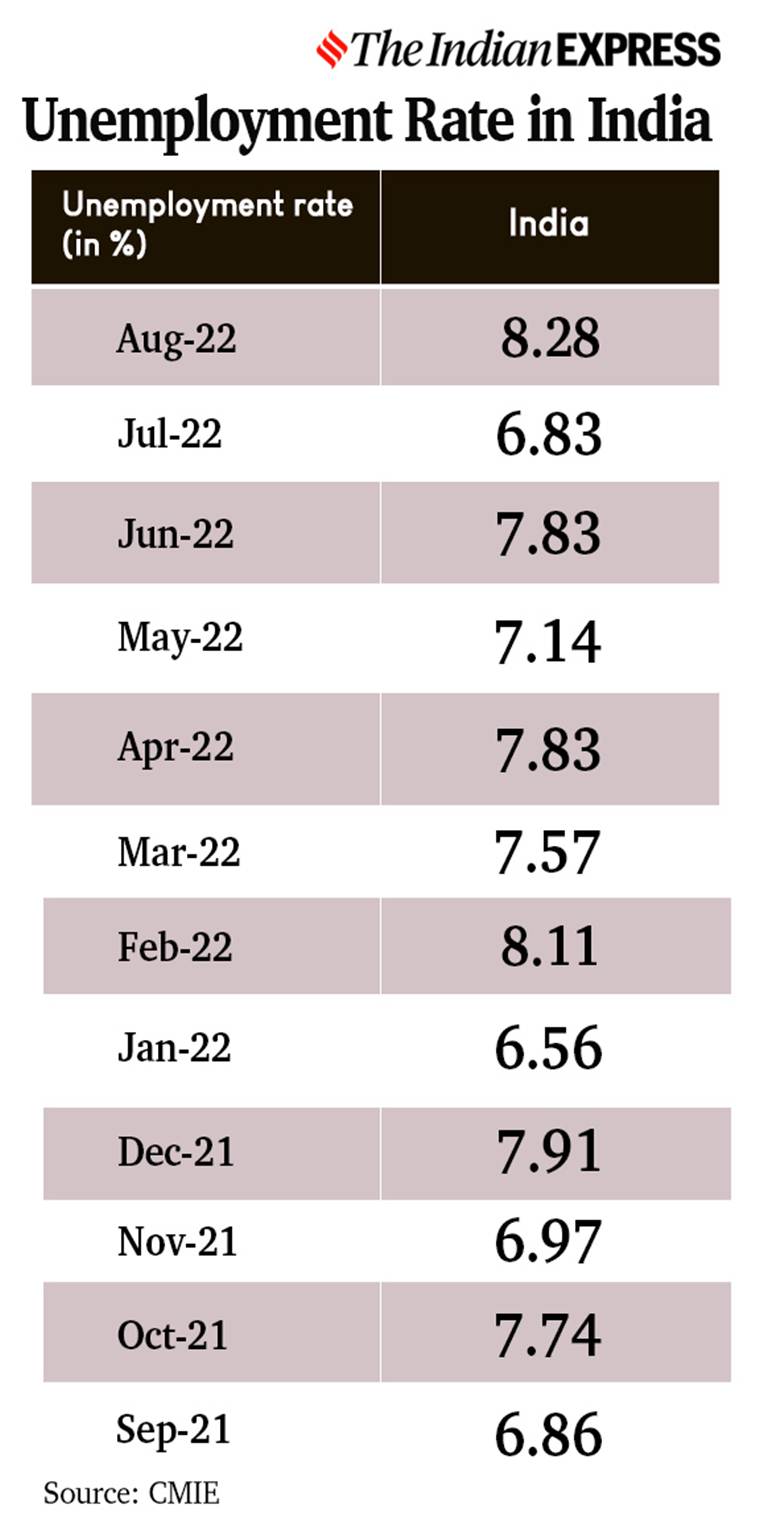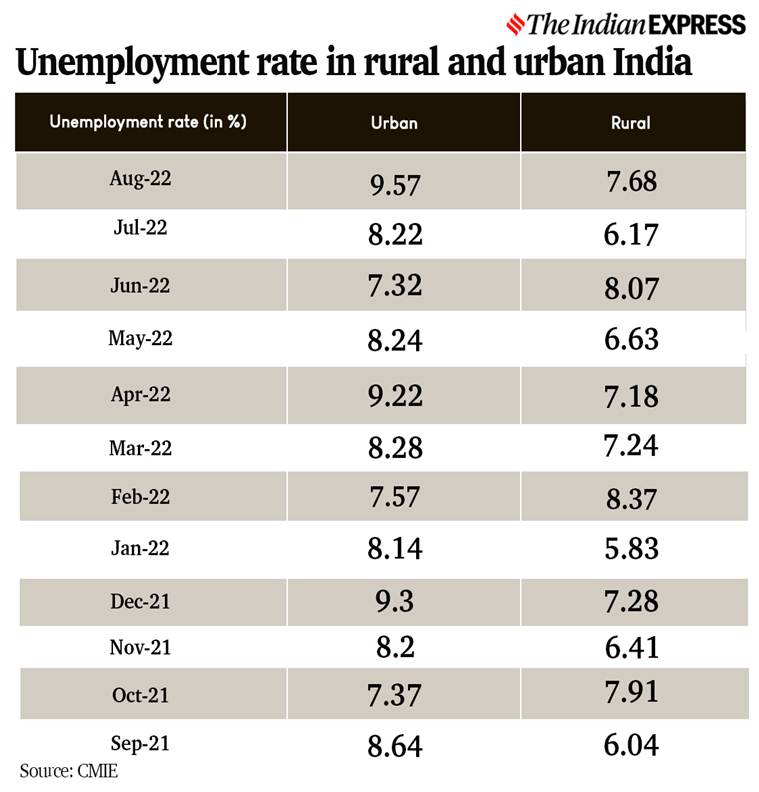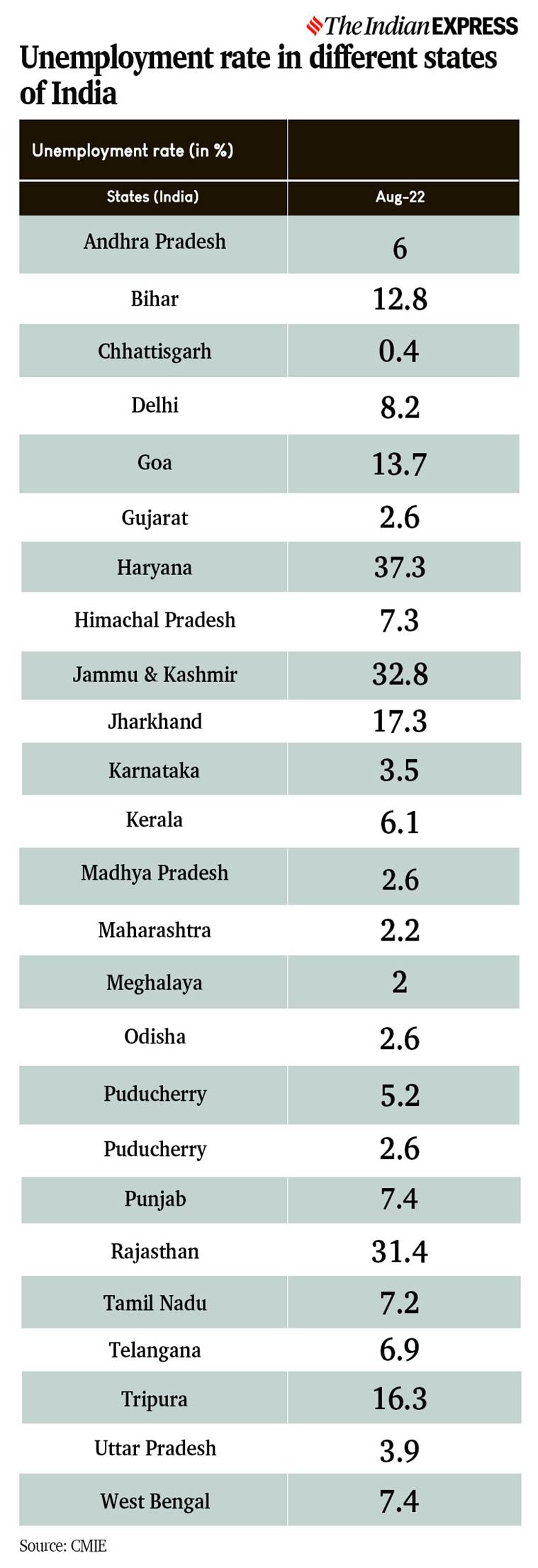Udit Misra is Senior Associate Editor. Follow him on Twitter @ieuditmisra ... Read More
© The Indian Express Pvt Ltd
Latest Comment
Post Comment
Read Comments
 Job seekers at a job mela in New Delhi. (Express Photo: Tashi Tobgyal, File)
Job seekers at a job mela in New Delhi. (Express Photo: Tashi Tobgyal, File)According to the data released by the Centre for Monitoring Indian Economy (CMIE), India’s unemployment rate in August rose to 8.3%. This is the highest unemployment rate in the past 12 months (see Table 1). In August 2021, the unemployment rate was 8.35%.
 Table 1: Unemployment rate in India.
Table 1: Unemployment rate in India.
Yes, it often varies significantly. For instance, in August, urban unemployment was 9.6% and rural was 7.7%. Table 2 details how rural and urban unemployment rates have been over the past 12 months. Only in two months — February and June — has the rural unemployment rate been higher than the urban unemployment rate.
 Table 2: Unemployment rate in rural and urban India.
Table 2: Unemployment rate in rural and urban India.
Table 3 details the state-wise unemployment rates. As the data shows, there is a significant variance in the unemployment rate across states. Haryana, J&K and Rajasthan have the highest levels of unemployment rate — each with over 30% of the unemployment rate.
 Table 3: Unemployment rate in different states of India.
Table 3: Unemployment rate in different states of India.
In sharp contrast, there are many states with remarkably low unemployment rates as well. Chhattisgarh, for instance, has an unemployment rate of just 0.4%. Maharashtra, Madhya Pradesh, Odisha and Meghalaya — all have unemployment rates well below 3%.
The unemployment rate is essentially the percentage of working-age people (15 years and above) who are demanding work but not able to get a job. Both aspects of the definition are important. To be counted as an unemployed person one has to both “demand” work — that is, be part of the labour force — and then fail to get a job.
As such, the unemployment rate is calculated by looking at the labour force — that is, all the people of the working age who are demanding work — and then finding out what percentage of them are unable to land a job. That percentage is the unemployment rate.
The underlying size of the labour force — that is, the percentage of working-age people demanding work — itself varies over time and is measured by the Labour Force Participation Rate (LFPR).
Unemployment rate = [Total unemployed / Total Labour Force]
In other words, unemployment rates are expressed as a percentage of the labour force, not the total population.
Since the unemployment rate is essentially a ratio between the total unemployed and the total labour force, it can go up whenever the number of unemployed increases more than the increase in the total labour force. Reportedly, in August while the labour force increased by 4 million, the economy instead of creating new jobs, actually shed 2.6 million existing jobs.
In other words, while the total number of unemployed went up by 6.6 million, the labour force only went up by 4 million. Hence the spike in the unemployment rate.






